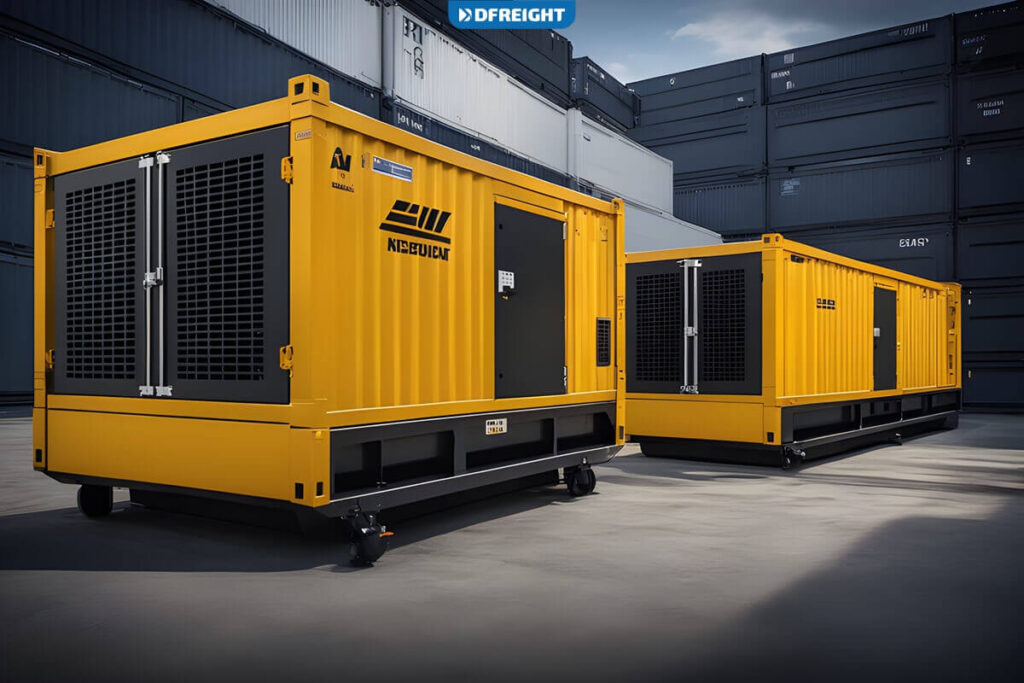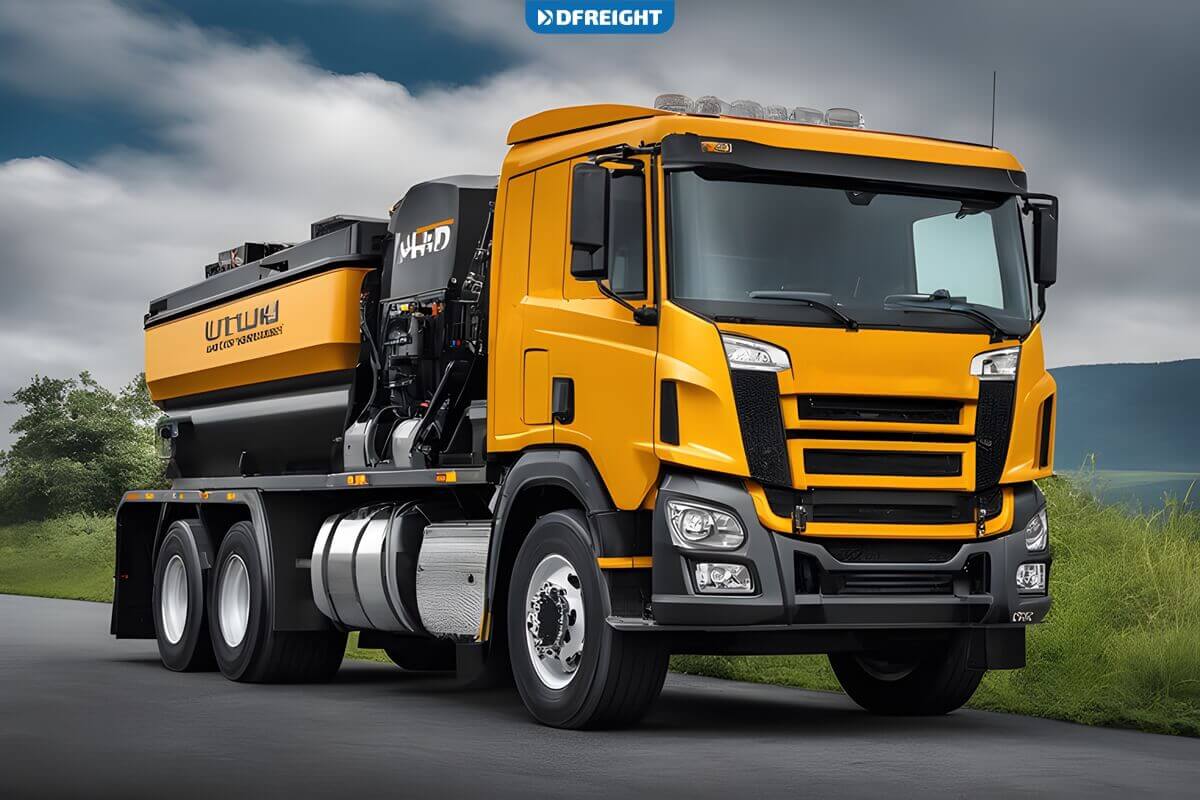Welcome to a comprehensive guide that sheds light on the intricate process of shipping generators and power systems. In a world reliant on a constant energy supply, the successful transportation of these essential power sources is pivotal. This guide delves into the multifaceted aspects of shipping, from meticulous preparation and packaging to the intricacies of labeling, documentation, and selecting the optimal shipping method. Whether you’re a manufacturer, distributor, or end-user, this guide equips you with the knowledge to navigate the challenges of shipping generators and power systems, ensuring their safe and reliable delivery to their intended destinations.
Ready to streamline your shipping experience? Try DFreight, your digital freight forwarder, for seamless, efficient, and stress-free shipments. Get started now!
Table of Contents
Types of Generators and Power Systems
Generators and power systems come in various types and configurations, each designed to cater to specific needs and applications. Understanding these different types is crucial for selecting the right generator for your requirements and making informed decisions when it comes to shipping them. In this section, we’ll explore two primary categories of generators: portable and stationary, and delve into the world of backup power systems and industrial generators.
Differentiating Between Portable and Stationary Generators
- Portable Generators: Portable generators are versatile and convenient sources of power. They are designed for temporary use and are often used in scenarios such as camping trips, outdoor events, or emergency backup during power outages. These generators are compact, relatively lightweight, and typically run on gasoline or propane. Due to their mobility, they are relatively easier to transport, making them suitable for various situations. Proper packaging and securing are essential when shipping portable generators to prevent damage during transit.
- Stationary Generators: On the other hand, stationary generators are installed at a fixed location and provide a reliable backup power source for homes, businesses, and industrial facilities. These generators are typically larger and more powerful than portable ones, capable of sustaining power over extended periods. They can be fueled by natural gas, diesel, or propane and are often integrated with automatic transfer switches to kick in seamlessly when the main power supply fails. Shipping stationary generators requires specialized handling due to their size, weight, and considerations for proper installation at the destination.

Preparation for Shipping
Before a generator embarks on its journey to a new location, meticulous preparation is essential to ensure its safe transit and arrival in optimal condition. This section explores the critical steps in preparing a generator for shipping, including assessing its size and weight, performing proper shutdown procedures, and securing any loose parts and accessories.
Assessing Generator Size and Weight
Understanding the dimensions and weight of the generator is the first step in planning for its safe transportation. Generators come in various sizes, and their weight can vary significantly based on their power output and construction. Measure the generator’s length, width, and height, and accurately record its weight. This information will help you determine the appropriate packaging and handling requirements. It’s essential to provide accurate data to your shipping provider to ensure they allocate the right resources and equipment.
Ensuring Proper Shutdown and Fuel Draining
Before shipping a generator, performing a proper shutdown is crucial to prevent any potential damage during transit. Follow the manufacturer’s guidelines for shutting down the generator safely. This may involve turning off the engine, disconnecting the battery, and cooling the generator. Additionally, if the generator runs on fuel (gasoline, diesel, propane), it’s important to drain the fuel tank and disconnect the fuel lines. Shipping generators with fuel inside can lead to leakage, safety hazards, and complications during customs clearance.
Securing Loose Parts and Accessories
Generators often have various parts and accessories that must be secured before shipping. Loose components, such as control panels, exhaust systems, and removable covers, should be properly fastened or removed and packaged separately. These measures prevent parts from vibrating, shifting, or causing damage to the generator during transit. Carefully label and document each accessory to ensure they are properly reassembled upon arrival.
By meticulously assessing the generator’s size and weight, performing a proper shutdown and fuel draining, and securing loose parts and accessories, you set the foundation for a successful shipping process. These preparatory steps not only help prevent potential damage to the generator but also contribute to the safety of everyone involved in handling and transporting the equipment. In the next section, we will delve into the selection of appropriate packaging materials to ensure the generator’s protection throughout its journey.
Choosing the Right Packaging
Proper packaging is a pivotal aspect of ensuring the safe transportation of generators and power systems. The packaging materials you choose can mean the difference between a generator arriving at its destination unscathed or suffering damage along the way. In this section, we’ll guide you through the process of selecting suitable packaging materials, weighing the pros and cons of crates and pallets, and safeguarding sensitive components.
Selecting Suitable Packaging Materials
When it comes to packaging generators, durability, and protection are paramount. Generators are often exposed to various environmental conditions and potential rough handling during transit. Consider using robust packaging materials such as heavy-duty corrugated cardboard, foam padding, and reinforced plastics. These materials provide a protective barrier against impacts, moisture, and dust, safeguarding the generator throughout its journey.
Crates
Crates offer comprehensive protection by enclosing the generator on all sides. They are particularly beneficial for shipping fragile or valuable generators over long distances. Crates provide excellent structural support and can be customized to precisely fit the generator’s dimensions. However, crates tend to be heavier, which can impact shipping costs. Additionally, the enclosed nature of crates may limit visibility for customs inspections.
Pallets
Pallets provide a sturdy platform for securing the generator during shipping. They are cost-effective and versatile, allowing for easy loading and unloading with forklifts or pallet jacks. Pallets are ideal when shipping multiple generators as part of a larger shipment. However, while pallets protect the generator’s bottom, they leave the sides and top exposed to potential damage unless further protective measures are taken.
Protecting Sensitive Components
Generators often feature sensitive components that require additional protection. Control panels, displays, electronic systems, and delicate parts can be vulnerable to impacts and vibrations during transit. Use cushioning materials such as foam, bubble wrap, or anti-static packing peanuts to shield these components from shocks. Secure these protective layers in place to prevent shifting or movement inside the packaging.
By carefully selecting the appropriate packaging materials, deciding between crates and pallets based on your specific needs, and taking extra precautions to protect sensitive components, you significantly enhance the chances of your generator arriving at its destination in pristine condition. The next section will delve into the importance of clear labeling and proper documentation for efficient shipping logistics.
Labeling and Documentation
In the world of shipping generators and power systems, clear labeling and accurate documentation play a crucial role in ensuring a seamless and efficient logistics process. Proper labeling and documentation help shipping companies handle your generator with care and ensure compliance with regulations and international standards. This section emphasizes the importance of clear shipping labels, guide you through generating accurate shipping documentation, and highlights the significance of adhering to regulations and standards.
Importance of Clear Shipping Labels
Clear and accurate shipping labels are the first point of contact between your generator and the shipping process. Labels should include essential information such as the destination address, contact details, and any handling instructions. Clearly marking fragile components, hazardous materials, and orientation arrows on the packaging can guide handlers in treating the generator with the required care. This reduces the risk of mishandling and expedites the handling process at various stages of transit.
Generating Accurate Shipping Documentation
Accurate shipping documentation is essential for the successful transportation of generators across borders and through various shipping stages. This documentation includes bills of lading, packing lists, invoices, and any necessary customs declarations. Ensure that the information provided is consistent across all documents and matches the generator’s details and packaging. Any discrepancies can lead to delays, customs issues, or even shipment rejection.
Compliance with Regulations and International Standards
When shipping generators internationally or domestically, it’s vital to adhere to regulations and international standards governing the transportation of goods. These regulations encompass safety protocols, hazardous material handling, and customs requirements. Depending on the generator type and shipping route, you might need to consider guidelines set by organizations such as the International Air Transport Association (IATA) or the International Maritime Organization (IMO). Non-compliance can result in fines, delays, and potential damage to the generator.
Furthermore, if your generator uses lithium batteries or contains dangerous materials, specific regulations must be followed to ensure safe and lawful transport. Familiarize yourself with these regulations to avoid any legal complications during shipping.
By emphasizing the importance of clear shipping labels, generating accurate shipping documentation, and adhering to regulations and international standards, you set the groundwork for a successful and legally compliant shipping process. In the upcoming sections, we’ll explore the various shipping methods available for transporting generators and power systems and help you make informed decisions about the best approach for your specific needs.
Selecting a Shipping Method
Choosing the right shipping method for transporting generators and power systems is a critical decision that can significantly impact the entire shipping process’s efficiency, cost, and safety. The available options include land, ocean, and air transportation, each with its own set of advantages and drawbacks. Additionally, you’ll need to consider whether to opt for standard freight services or express options. This section explores the pros and cons of different shipping methods, factors to consider between freight and express, and the importance of coordinating with shipping companies.
Land, Sea, or Air: Pros and Cons
Land Transportation:
- Pros: Land transportation, typically by truck or train, is often the most convenient for domestic shipments. It offers relatively lower costs and more flexible scheduling.
- Cons: Land transport might be slower than airfreight and less suitable for long-distance international shipping.
Sea Transportation:
- Pros: Shipping by sea is cost-effective for large or heavy generators and provides space for bulk shipments. It’s suitable for intercontinental shipping.
- Cons: Sea transport can be time-consuming and subject to potential weather-related delays. It’s also less suitable for urgent deliveries.
Air Transportation:
- Pros: Airfreight is the fastest mode of transportation, making it ideal for time-sensitive shipments. It provides a secure and efficient way to transport high-value or delicate generators.
- Cons: Airfreight is often more expensive than other options, especially for larger generators. Limited cargo space can also impact availability.
Freight vs. Express: Factors to Consider
Freight Services:
- Pros: Freight services are cost-effective for non-urgent shipments and larger quantities of generators. They offer a balance between cost and delivery speed.
- Cons: Freight services can have longer transit times and may not provide real-time tracking or expedited delivery options.
Express Services:
- Pros: Express services guarantee fast delivery and real-time tracking. They are suitable for urgent shipments, ensuring your generator arrives at its destination quickly.
- Cons: Express services are generally more expensive compared to standard freight options. They might have size and weight restrictions as well.
Coordination with Shipping Companies
Coordinating with reputable shipping companies is essential to ensure a smooth shipping process. Research and select shipping partners with experience in handling generators and power systems. Clear communication about the generator’s specifications, packaging requirements, and delivery expectations is crucial. Provide accurate dimensions, weight, and any special handling instructions to prevent delays or mishandling.
Additionally, inquire about insurance coverage options offered by the shipping companies. Insurance can provide financial protection in case of unforeseen events during transit, offering peace of mind when shipping valuable generators.
By carefully evaluating the pros and cons of different shipping methods, considering the factors between freight and express services, and establishing effective communication and coordination with shipping companies, you can make an informed decision that aligns with your budget, timeline, and generator transportation needs. In the following sections, we’ll delve into the steps required to secure and handle the generator during shipping to ensure its safe arrival.
Experience Seamless Shipping with DFreight: Your Ultimate Partner for Efficient Deliveries!
In conclusion, the successful shipping of generators and power systems involves a harmonious orchestration of preparation, packaging, documentation, and collaboration. By delving into the insights provided in this guide, you’ve gained a comprehensive understanding of the complexities and nuances of this process. As you embark on your shipping journey, remember that each decision you make, from choosing the right packaging to selecting a suitable shipping method, contributes to the safe and efficient delivery of these crucial energy solutions. With the knowledge acquired here, you’re empowered to navigate the challenges and ensure that generators and power systems reach their destinations, ready to illuminate and empower lives.
What are the challenges when shipping generators and power systems?
Shipping generators and power systems involves factors like size, weight, packaging, compliance, and choosing the right transportation method.
Why is proper packaging crucial when shipping generators and power systems?
Proper packaging ensures protection against damage during transit, safeguarding delicate components and ensuring the generator’s integrity upon arrival.
How do I choose the best shipping method for generators and power systems?
Consider factors like urgency, distance, size, and budget to decide between land, sea, or air transportation based on your specific requirements.
What regulations and standards should I consider when shipping generators and power systems internationally?
When shipping across borders, adhere to international regulations like those set by IATA, IMO, and customs authorities to ensure legal compliance.
What role does clear labeling play in shipping generators and power systems?
Clear labeling ensures proper handling and efficient customs clearance by providing essential information and instructions to shipping partners.














